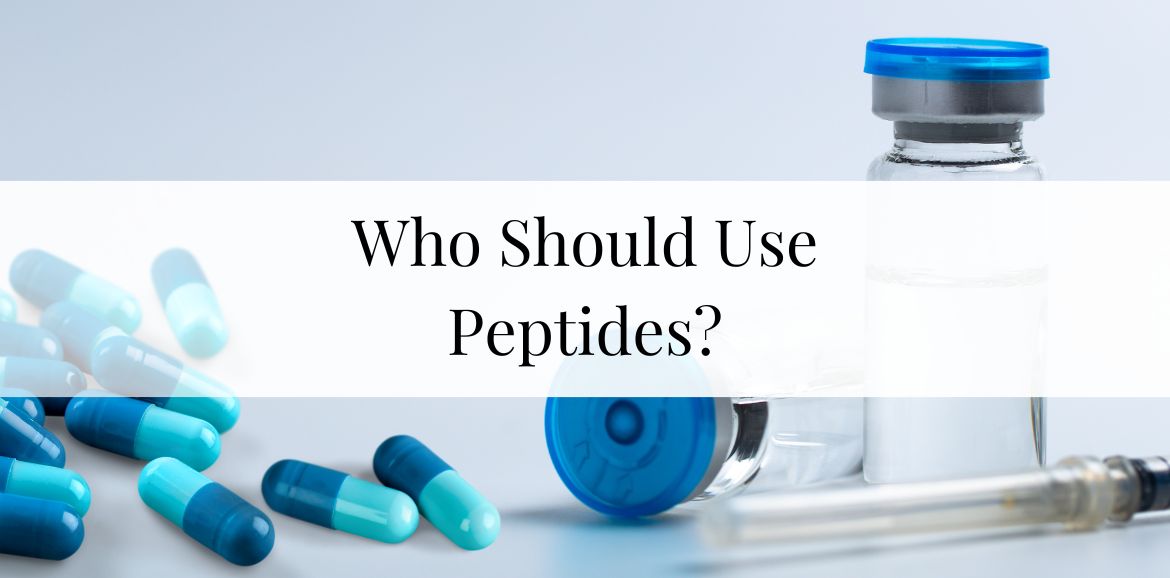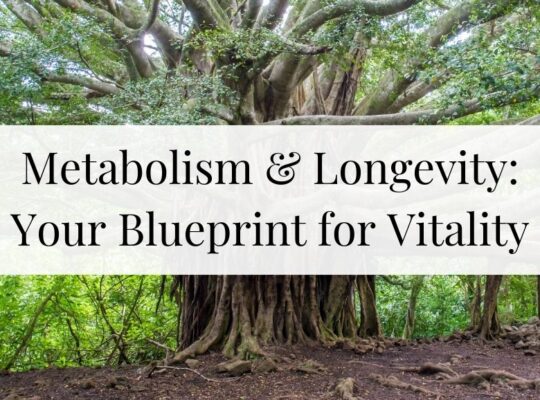What Peptides Are and How They Can Help Promote Healing When Used Properly
What Are Peptides?
Peptides are short chains of amino acids, usually 2 to 50 amino acids strung together. Think of them as tiny messengers that tell your body how to behave—when to heal, regenerate, burn fat, calm inflammation, or make hormones. Amino acids are the raw ingredients, Peptides are short, specific messages, and Proteins are full-function structures with major jobs in the body. Your body naturally produces over 7,000 types of peptides—but due to stress, aging, poor gut function, or chronic illness, production often slows or becomes imbalanced. When we use therapeutic peptides, we’re harnessing the body’s own signaling system to nudge it toward balance—whether that’s healing the gut lining, regenerating tissue, balancing blood sugar, or improving sleep and immune health.
For example:
- GLP-1 is a peptide that helps regulate blood sugar and appetite.
- BPC-157 supports tissue repair and gut healing.
- Thymosin alpha-1 modulates immune function.
How Peptides Support Healing
Used properly, specific peptides can:
- 🔁 Repair cellular damage (great for chronic inflammation or oxidative stress)
- 💤 Improve sleep and circadian rhythm (e.g. deep healing through better quality rest)
- 🧠 Boost cognitive clarity (especially helpful in midlife brain fog and stress)
- 🏋🏼♀️ Support muscle tone and recovery (without overtraining)
- ⚖️ Regulate metabolism and appetite (great for women with thyroid or insulin resistance)
- 🌸 Balance hormones (some peptides influence the HPA axis, GH, or sex hormones)
- 🛡️ Strengthen immunity and resilience (especially post-viral or after long-term stress)
Why Proper Use Is Essential
Using peptides without understanding the why, what, or when can cause:
- Confused hormone signaling
- Worsening inflammation or immune responses
- Wasted time and money—without the right foundation, they may do little
Peptides work best when paired with a solid foundation of:
- Nutrient repletion
- Balanced blood sugar
- Healthy gut-liver function
- Personalized lab insight (to match the right peptide to the right root issue)
The Most Common Mistakes People Make with Peptides—And How to Avoid Them
❌ Mistake #1: Using Peptides as a Quick Fix Instead of a Healing Tool
Peptides aren’t magic bullets—they’re amplifiers of what’s already in motion.
If your diet is depleted, your gut is inflamed, or your sleep is poor, peptides can only go so far.
✨ What to do instead:
Build your foundation first. Peptides work best in a body that’s well-nourished, well-rested, and supported by clean habits.
❌ Mistake #2: Choosing Peptides Without Understanding Your Root Cause
Not all peptides are created equal—some support growth hormone, others immunity, others neurological healing.
✨ What to do instead:
Use functional lab testing and symptom patterns to guide which peptide (if any) is right for you. Example: someone with gut issues may benefit from BPC-157, while someone with blood sugar struggles might do better with GLP-1 agonists.
❌ Mistake #3: Overusing or Combining Peptides Without Supervision
More is not better. Stacking too many peptides, or taking them for too long, can throw off your body’s natural rhythm and hormone signals.
✨ What to do instead:
Work with a knowledgeable practitioner. Use peptides strategically and temporarily—not forever. Always reassess.
❌ Mistake #4: Skipping the Basics—Nutrition, Sleep, Stress Support
Peptides can’t override a lifestyle that’s out of balance. If you’re running on stress hormones, under-eating, or skipping rest, your results may stall or backfire.
✨ What to do instead:
Pair peptides with blood sugar balance, proper protein intake, mineral repletion, and nervous system regulation. That’s where the real magic happens.
❌ Mistake #5: Getting Peptides from Unsafe or Unregulated Sources
This is a big one. There are a lot of cheap, online options—but quality, sourcing, and safety matter.
✨ What to do instead:
Use reputable, pharmacy-compounded peptides under guidance. Know your sourcing. Your health is too precious for guesswork.
Safe and Strategic Ways to Incorporate Peptides on Your Health Journey
1. Start with the Big Picture: What Are You Healing From?
Before adding any peptide, ask:
What is the root cause I’m trying to address?
Is it inflammation? Gut repair? Insulin resistance? Hormone balance? Recovery from burnout or illness?
Peptides work best when anchored to a clear intention. They are tools—not treatments in isolation.
2. Run Functional Labs First
Your lab results are the blueprint for peptide use. Labs help identify:
- Inflammatory markers
- Gut permeability or infections
- Hormone imbalances (thyroid, cortisol, insulin)
- Nutrient deficiencies
This data helps you choose the right peptide for your body’s current needs—and avoid wasting time or money on ones that don’t fit.
3. Create a Supportive Terrain First
Think of peptides as a “spark”—but you need a well-prepared terrain for that spark to light.
✔️ Clean, anti-inflammatory nutrition
✔️ Good sleep hygiene
✔️ Regulated nervous system
✔️ Daily movement
✔️ Blood sugar balance
Without these, peptides can’t do their job effectively—or safely.
4. Use the Right Peptide, At the Right Time, For the Right Duration
Some peptides support short-term repair (like BPC-157 for gut lining or injury), while others support long-term regeneration (like CJC/Ipamorelin for growth hormone).
Timing and cycling matter. Strategic use might look like:
- 6–12 week cycles
- Paired with targeted nutrition protocols
- Used during recovery, after illness, injury, or burnout
- Reassessed every 1–3 months
Avoid “chronic use” unless under clinical supervision.
5. Partner with a Practitioner Who Understands the Whole Body
Peptides are powerful—but they are just one piece of your healing puzzle.
Work with someone who can help you integrate them into:
- A functional healing plan
- Lab-based rebalancing
- Lifestyle, mindset, and resilience building
This way, you’re not chasing results—you’re building a foundation.
Conclusion and Real-Life Analogy:
It all begins with amino acids—so quality nutrition and digestion are the foundation for any peptide to work well. Think of peptides like garden tools. You can use them to prune, water, or fertilize specific plants… but if the soil (your foundational health) isn’t nourished, the tools can only do so much.
If you’re curious about whether peptides have a place in your healing journey—but want to avoid wasted time, money, or risk—book a call with me.
Together, we’ll:
- Review your health story and goals
- Identify root causes with the right labs
- Build a strategy that supports whole-body healing
✨ Because real healing happens when your body feels safe, nourished, and supported.








